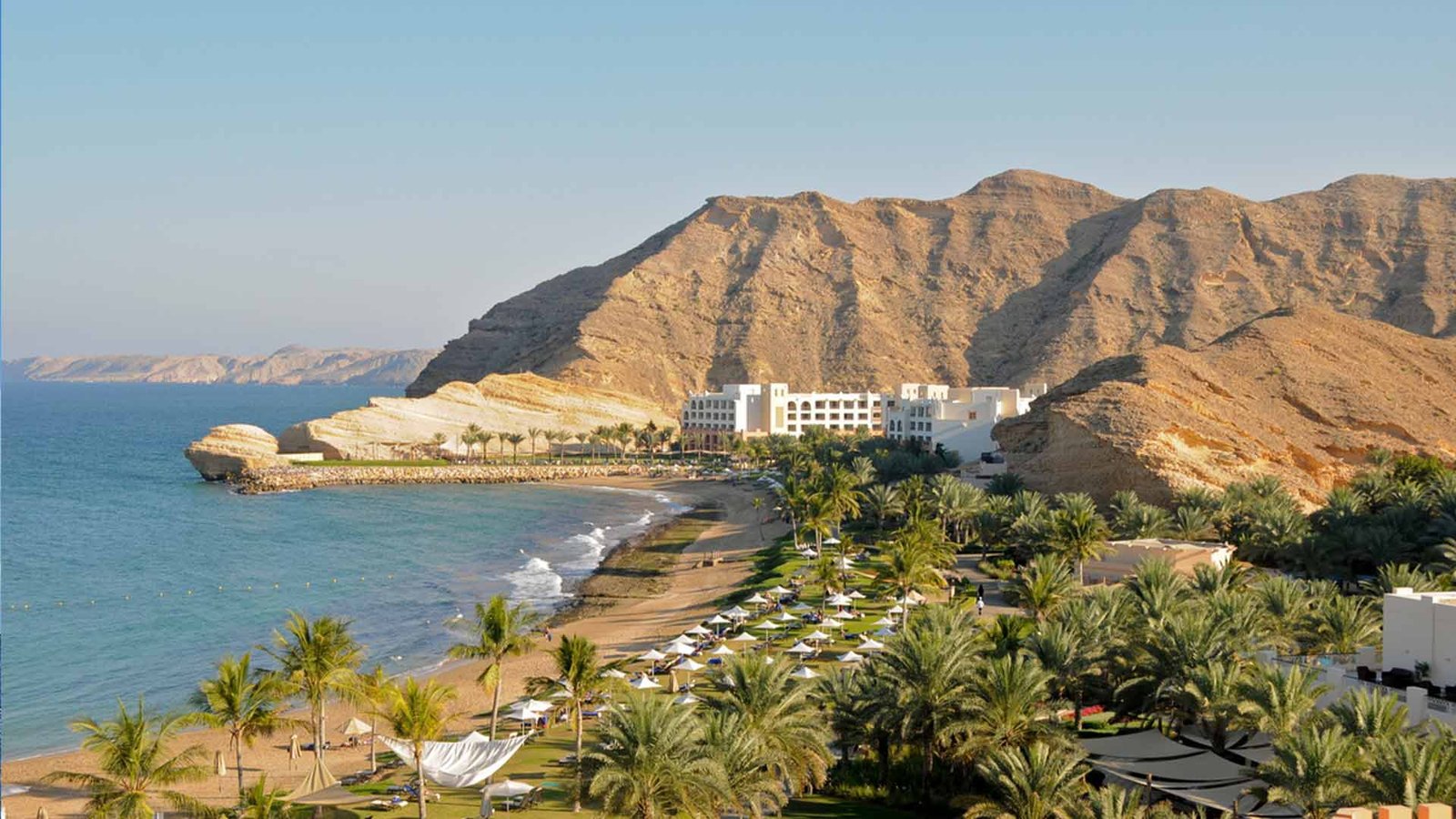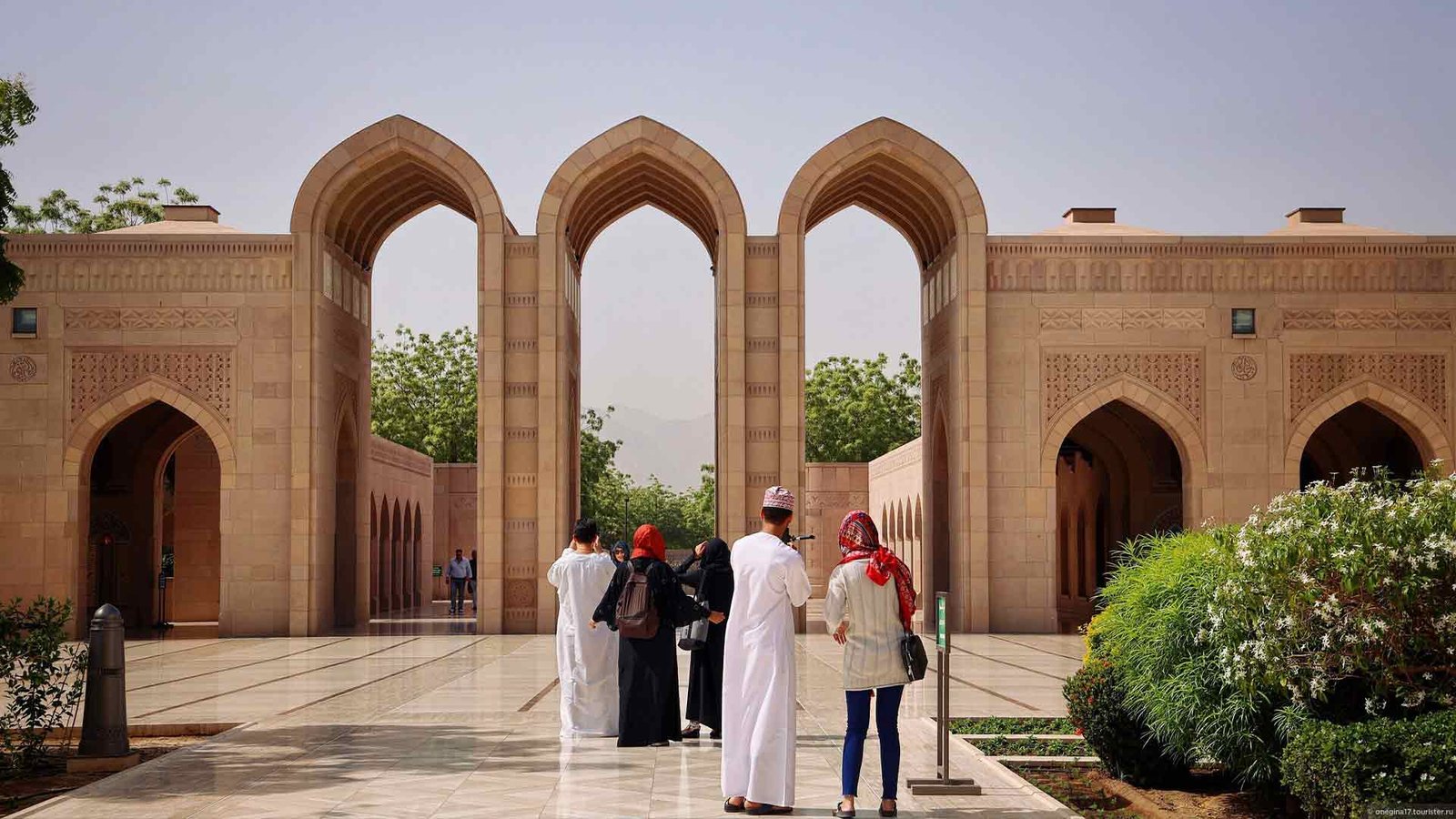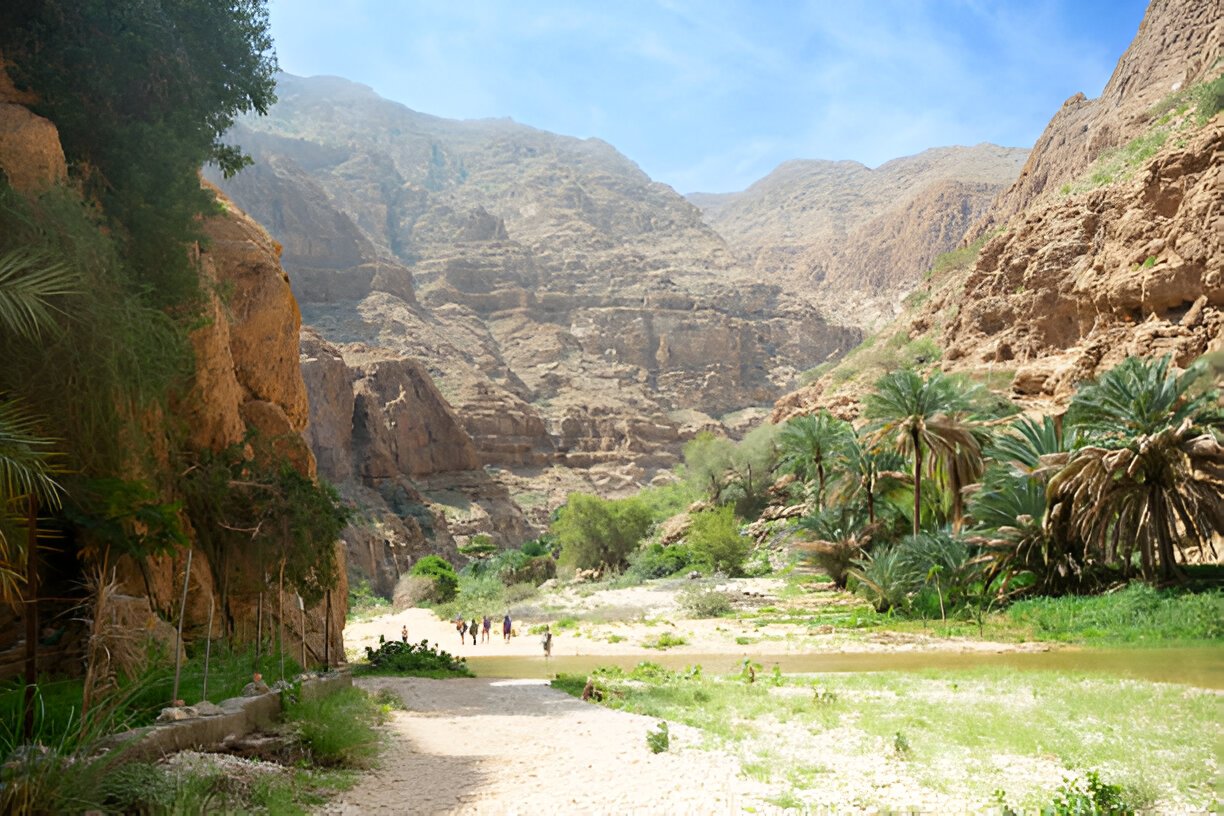

Weather Conditions: The majority of visitors to Oman prefer the winter season due to the mild temperatures, which range from 17°C to around 25°C (77°F) in a single month, such as February. The climate during this time is ideal for outdoor activities, allowing you to explore the stunning landscapes and scenic spots across the country.
Activities and Events: During these months, you can enjoy numerous outdoor activities, particularly along the coast. The mountains are also perfect for hiking, and the weather is conducive to exploring Oman’s natural beauty. The Muscat Festival, held during this season, offers a chance to experience local arts, music, and cuisine, attracting people from all over the world.
Weather Conditions: The summer months in Oman can be extremely hot, with temperatures often exceeding 40°C (104°F). However, the coastal regions are somewhat cooler due to the sea breeze, although the mountains can still be quite hot.
Activities and Events: Despite the high temperatures, summer is the ideal time for scuba diving and snorkeling along the coast. The Khareef season, from June to September, transforms Salalah’s landscape into a lush, green paradise due to the monsoon rains, offering a unique contrast to the rest of the country.
Oman hosts several festivals that highlight its rich culture and heritage:
These festivals offer a deeper understanding of Omani traditions and provide a vibrant cultural experience for visitors.
In the winter months, Oman unveils its true charm—where serene beaches, golden deserts, and majestic mountains invite travelers to experience nature in its purest form.
Winter is undoubtedly the best time to explore the extensive coastline of Oman, where the weather is mild and the waters are calm. This season offers ideal conditions for a variety of water activities, making it a perfect time for those who enjoy the sea. Muscat, the capital city, is renowned for its beautiful beaches and vibrant marine life, offering visitors an opportunity to relax and explore the underwater world. The Musandam Peninsula, often referred to as the “Norway of Arabia,” is famous for its stunning fjords and crystal-clear waters, making it a prime location for snorkeling and diving.
The coastline of Oman, with its serene beaches and thriving marine ecosystems, is a paradise for water enthusiasts, particularly in the tranquil winter months.

Oman’s inland regions are steeped in history and culture, making them a must-visit for those interested in exploring the rich heritage of the country. Winter is the best time to embark on cultural and historical tours, as the weather is pleasant and conducive to outdoor exploration. Nizwa, often called the “Pearl of Islam,” is home to a historic fort and a traditional souq where visitors can immerse themselves in Omani culture. Bahla, another inland gem, is the site of a UNESCO World Heritage Site, offering a glimpse into the ancient architectural marvels of Oman.
Oman's inland regions are a treasure trove of history, where ancient forts and bustling souqs tell the stories of a rich and vibrant culture.
For wildlife enthusiasts, winter and spring are the prime seasons for spotting Oman’s unique fauna. The cooler temperatures and blooming landscapes create ideal conditions for observing the Arabian oryx, gazelles, and various bird species in their natural habitats. Oman’s nature reserves and coastal areas become alive with activity, offering a rare opportunity to witness these magnificent creatures up close.
In the heart of Oman, nature comes alive in the cooler months, offering a spectacle of wildlife that is both rare and awe-inspiring.
Traveling through Oman requires both preparation and respect—pack wisely, stay hydrated, and embrace the rich culture with open arms.
Oman’s cultural festivals are a highlight for visitors, offering a deep dive into the country’s traditions and heritage. Winter Cultural Highlights include the Muscat Festival, a vibrant celebration that showcases traditional Omani culture, music, and food. This festival is a feast for the senses, providing an immersive experience for all who attend. In the summer, despite the heat, the Khareef season in Salalah brings its own unique charm. The Salalah Tourism Festival celebrates the region’s natural beauty and cultural heritage, turning the city into a lush, green oasis thanks to the monsoon rains.
Oman's festivals are a celebration of life, where tradition meets joy, creating memories that last a lifetime.

The capital city of Oman, Muscat, is best visited in winter when the climate is moderate, making it ideal for exploring its many attractions. The Sultan Qaboos Grand Mosque, one of the largest mosques in the world, is a must-see, showcasing exquisite Islamic architecture. The Royal Opera House, another landmark, reflects Oman’s cultural sophistication and is a hub for international performances. Strolling through Mutrah Souq, a traditional market, offers a glimpse into Omani life, with its array of spices, jewelry, and textiles.
Known for its unique Khareef season, Salalah offers a completely different experience during the monsoon period from June to September. The city transforms into a lush green paradise, attracting visitors who want to experience its cool, misty weather and verdant landscapes. The natural beauty of Salalah during Khareef is enhanced by its waterfalls, wadis, and the sweet scent of frankincense that fills the air.
A cultural hub, Nizwa is best visited in winter for its historic sites and its proximity to the Jebel Akhdar mountains. The Nizwa Fort, a testament to Omani architectural ingenuity, offers panoramic views of the surrounding area. The nearby Jebel Akhdar, known as the “Green Mountain,” provides a refreshing escape with its terraced farms and cooler temperatures, perfect for hiking and exploring.
🟥 Deserts: The vast deserts of Oman, including the Wahiba Sands and the Empty Quarter (Rub’ al Khali), are best explored in winter when the temperatures are more bearable. The golden dunes of Wahiba Sands stretch as far as the eye can see, offering opportunities for dune bashing, camel trekking, and stargazing under the clear desert skies. The Empty Quarter, one of the largest sand deserts in the world, is a place of mystery and beauty, where the silence is profound, and the landscapes are surreal.
🟥 Mountains: Oman’s mountain ranges, particularly Jebel Shams and Jebel Akhdar, are known for their cooler temperatures and stunning views. Jebel Shams, the highest peak in Oman, is often called the “Grand Canyon of Arabia” due to its dramatic cliffs and deep gorges. The cooler climate makes it ideal for outdoor activities such as trekking, rock climbing, and camping. Jebel Akhdar is famous for its terraced fruit orchards, rose gardens, and the traditional mud-brick villages that cling to its slopes.
🟥 Coastal Areas: With over 3,000 kilometers of coastline, Oman is a haven for those who love the sea. The coastline is ideal for snorkeling, diving, and exploring marine life, especially in the winter months. The Daymaniyat Islands, a marine reserve, offer some of the best diving spots in the region, with vibrant coral reefs and abundant marine life. Ras Al Jinz is another coastal destination, renowned for its turtle nesting sites, where visitors can witness the hatching of sea turtles.

Oman is a destination that offers a rich tapestry of experiences, from its vibrant cultural heritage to its stunning natural landscapes. Understanding the best time to visit Oman is crucial to fully appreciating what this remarkable country has to offer. Whether you’re drawn to the cooler winter months, perfect for exploring cities like Muscat and Nizwa, or the unique summer season in Salalah during the Khareef, knowing the best time to visit Oman ensures you can make the most of its diverse opportunities for every type of traveler.
From the golden sands of the Wahiba Desert to the lush green mountains of Jebel Akhdar, Oman’s varied landscapes invite adventure and exploration. The country’s coastal regions, with their clear waters and abundant marine life, offer some of the best spots for snorkeling and diving, especially during the winter. Meanwhile, Oman’s cultural festivals and events provide a window into the country’s deep-rooted traditions and artistic expressions.
Whether you’re drawn by the allure of Oman’s deserts, the call of its mountains, or the tranquility of its coastal regions, this country promises a journey like no other. By immersing yourself in its culture, respecting its traditions, and exploring its natural wonders, you’ll leave with memories that will last a lifetime. So, take the time to plan your visit wisely, and Oman will reward you with experiences that are truly magical.
Never miss any important news. Subscribe to our newsletter.







